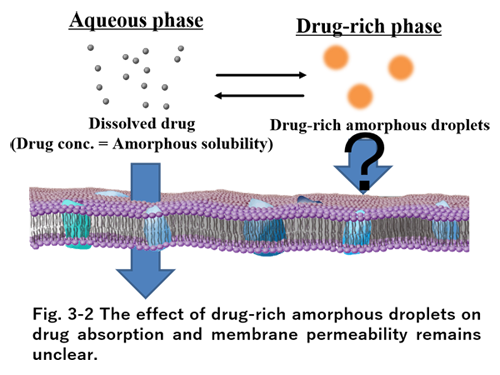Research Outline
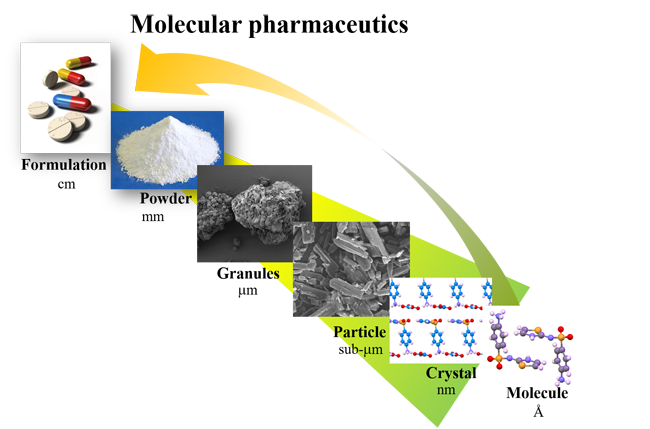
In our laboratory, we are conducting research to obtain highly effective and safe drug formulations based on the concept of "Molecular Pharmaceutics". We aim to establish better guidelines for drug design by clarifying the relationship between the molecular state of active pharmaceutical ingredients and additives in drug formulations and their physical properties. We have characterized a wide variety of pharmaceutical formulations, such as amorphous solid dispersions, drug nanoparticles, liposome formulations, lipid formulations, drug complexes (salt, co-crystal, cyclodextrin complexes), and porous materials (mesoporous silica, organic nanotubes). Based on the molecular state evaluation, we are conducting research to maximize the effect of those special formulations. In addition, we are developing various characterization methods to obtain molecular-level (or nm-order) information for various states, including solid, solution, and suspension-state. The following are some of the main research projects we are currently working on.
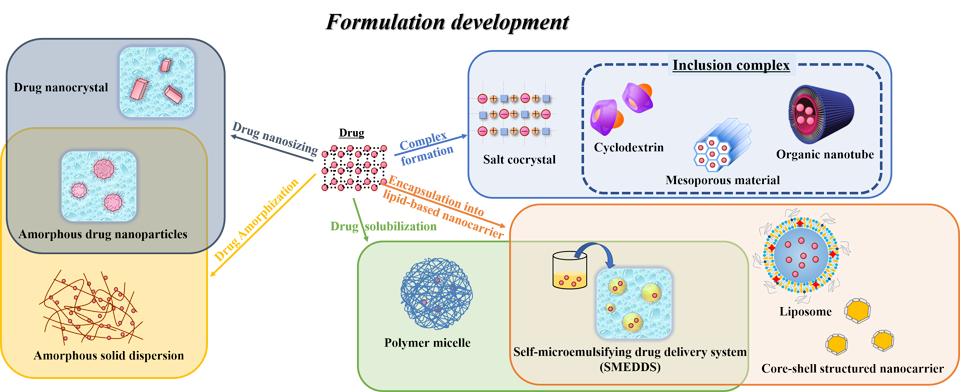
1. Establishment of Solid-State NMR Technique for Characterizing Drug Formulation
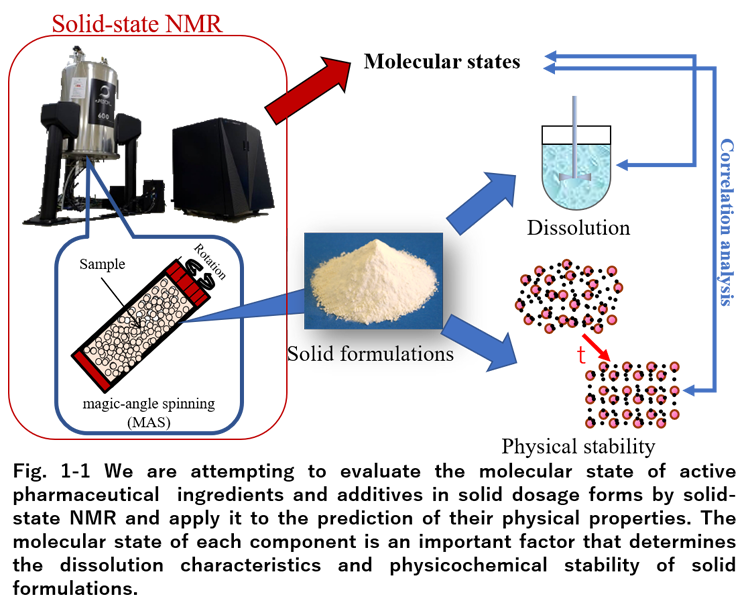
The molecular state of active pharmaceutical ingredients and additives in solid formulations is an important factor that determines their physical properties. Thermal measurements such as differential scanning calorimetry and spectroscopic techniques such as X-ray diffraction and infrared spectroscopy are widely used in formulation development. In our laboratory, in addition to these analytical techniques, solid-state NMR was used as a technique to evaluate the molecular state of the solid formulations. Solid-state NMR is a technique that uses magic-angle spinning (MAS) and high-power decoupling to obtain highly resolved NMR spectra of solid samples, enabling the evaluation of the drug formulations at the atomic level (Fig. 1-1).
In our previous studies, we have used solid-state NMR to clarify the interactions between drugs and additives in the solid formulations, such as amorphous solid dispersions, at the functional group level (Fig. 1-2). The relationship between the obtained molecular states and the physical properties of the formulation has been analyzed, and the physical stability of the formulation has been successfully predicted. We have also applied solid-state NMR to various other special formulations, such as porous materials and drug nanocrystal formulations. We are also conducting research on the evaluation of miscibility of drug formulations using solid-state NMR relaxometry and their impact on the physical stability of the formulations.
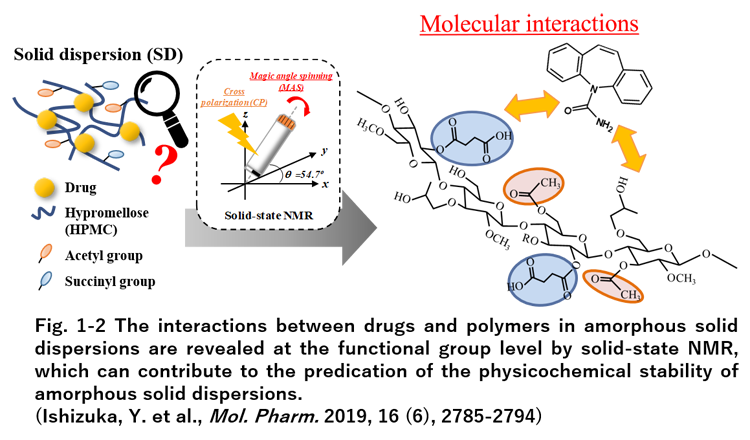
2. Development of Physical Property Evaluation Methods for Nanoformulations
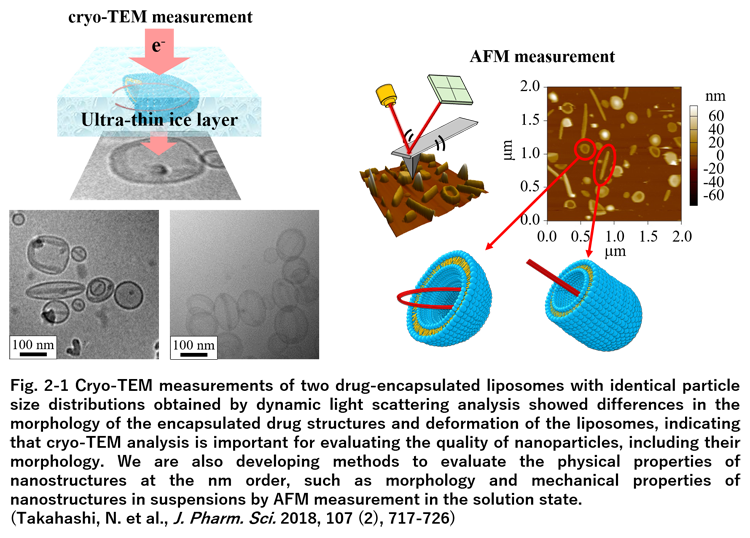
Various nanoformulations, such as liposomes, drug nanocrystals, and nanoemulsions, have been studied to improve the solubility, absorption, and kinetics of drugs. However, the methods for evaluating the physical properties of these nanoformulations have not yet been fully established, and there are still issues in the development of nanoformulations in terms of quality control. We are conducting detailed structural analysis of nanoformulations using cryo-TEM and AFM, and investigating the relationship with the physical properties of the formulations.
In our previous study, cryo-TEM measurements were performed on two types of drug-encapsulated liposomes prepared by different methods, and differences in the morphology of the encapsulated drug structures and deformation of the liposomes were observed (Fig. 2-1). Dynamic light scattering analysis of these two types of liposomes showed identical particle size distributions, indicating that cryo-TEM analysis is important for evaluating the quality of nanoformulations, including their morphology. We are also developing methods to evaluate physical properties on nm-order, such as morphology and mechanical properties of nanostructures in suspensions by AFM in the solution.
In addition, we are also developing methods to evaluate the molecular states of additives and drugs at the nanoparticle interface. In particular, we have developed a suspended-state NMR technique based on solid-state NMR, and have succeeded in clarifying the molecular states of drugs and additives at the interface of suspended nanoparticles (Fig. 2-2). We are studying the relationship between the obtained information on the nanoparticle interface and the physical properties of the nanoparticles, such as their dispersion stability. We are also working on the application of suspended-state NMR to the physical properties of lipid nanoparticles and emulsions.
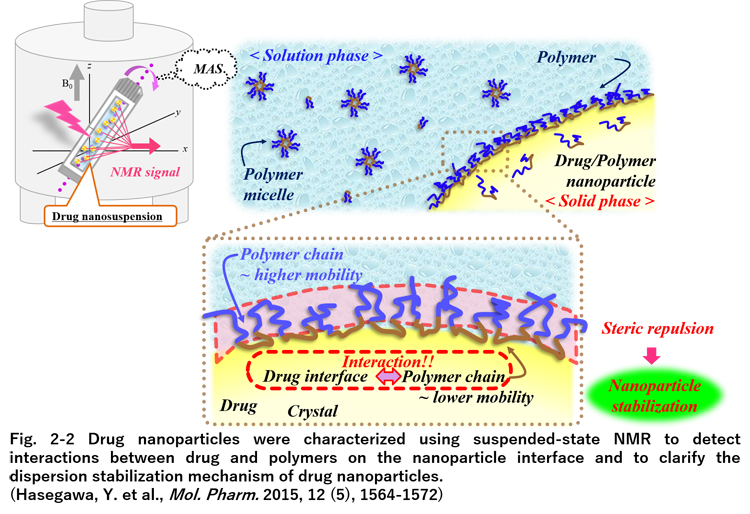
3. Elucidation of Drug Supersaturation Behavior
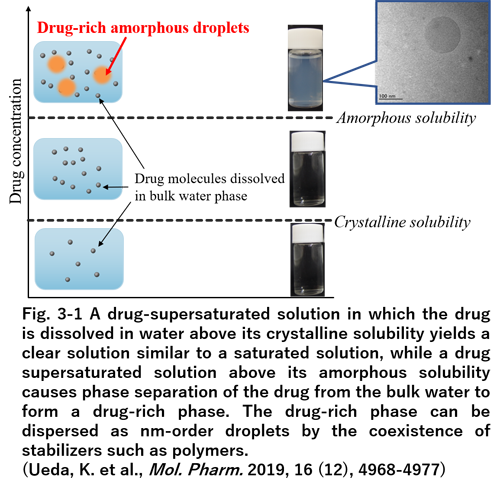
Drug-supersaturated formulations have been widely studied as a technique to improve the solubility and absorption of poorly soluble drugs. Supersaturation is a state in which a drug is dissolved beyond the crystalline solubility of the drug, and it has attracted attention as a technique for improving drug absorption (Fig. 3-1). In recent years, it has been reported that when the drug concentration exceeds the amorphous solubility in a drug supersaturated solution, the drug undergoes phase separation from the aqueous phase to form a drug-rich phase (liquid-liquid phase separation). However, the phase separation behavior of drugs and the stabilization mechanism of drug supersaturation are still unclear. We are investigating the relationship between the molecular state of the supersaturated drug (or phase-separated drug) and drug absorption behavior by quantitatively evaluating the drug-supersaturated solution formed by various special formulations, such as amorphous solid dispersions and lipid formulations, at the molecular level using NMR and other spectroscopic techniques (Fig. 3-2).
